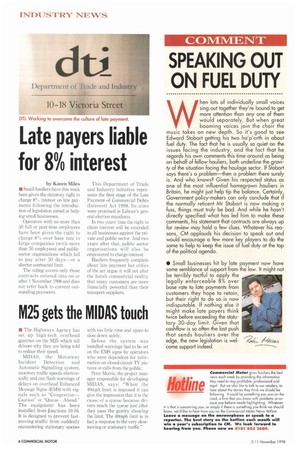M25 gets the MIDAS touch
Page 8

If you've noticed an error in this article please click here to report it so we can fix it.
• The Highways Agency has set up high-tech overhead gantries on the M25 which tell drivers why they are being told to reduce their speed.
MIDAS, the Motorway Incident Detection and Automatic Signalling system, monitors traffic speeds electron and can flash warnings of delays on overhead Enhanced Message Signs (EMS) with signals such as "Congestion— Caution" or "Queue Ahead.'' The equipment has been installed from Junctions 10-16. It is designed to prevent fastmoving traffic from suddenly encountering stationary queues with too little time and space to slow down safely.
Before the system was installed warnings had to be set on the EMS signs by operators who were dependent for information on closed-circuit TV tures or calls from the public.
Peter Morris, the project manager responsible for developing MIDAS, says: "When the 40mph limit is imposed it can give the impression that it is the cause of a queue because drivers reach the queue just after they pass the gantry showing the limit. The 40mph limit is in fact a response to the very slowmoving or stationary traffic."


























































































































